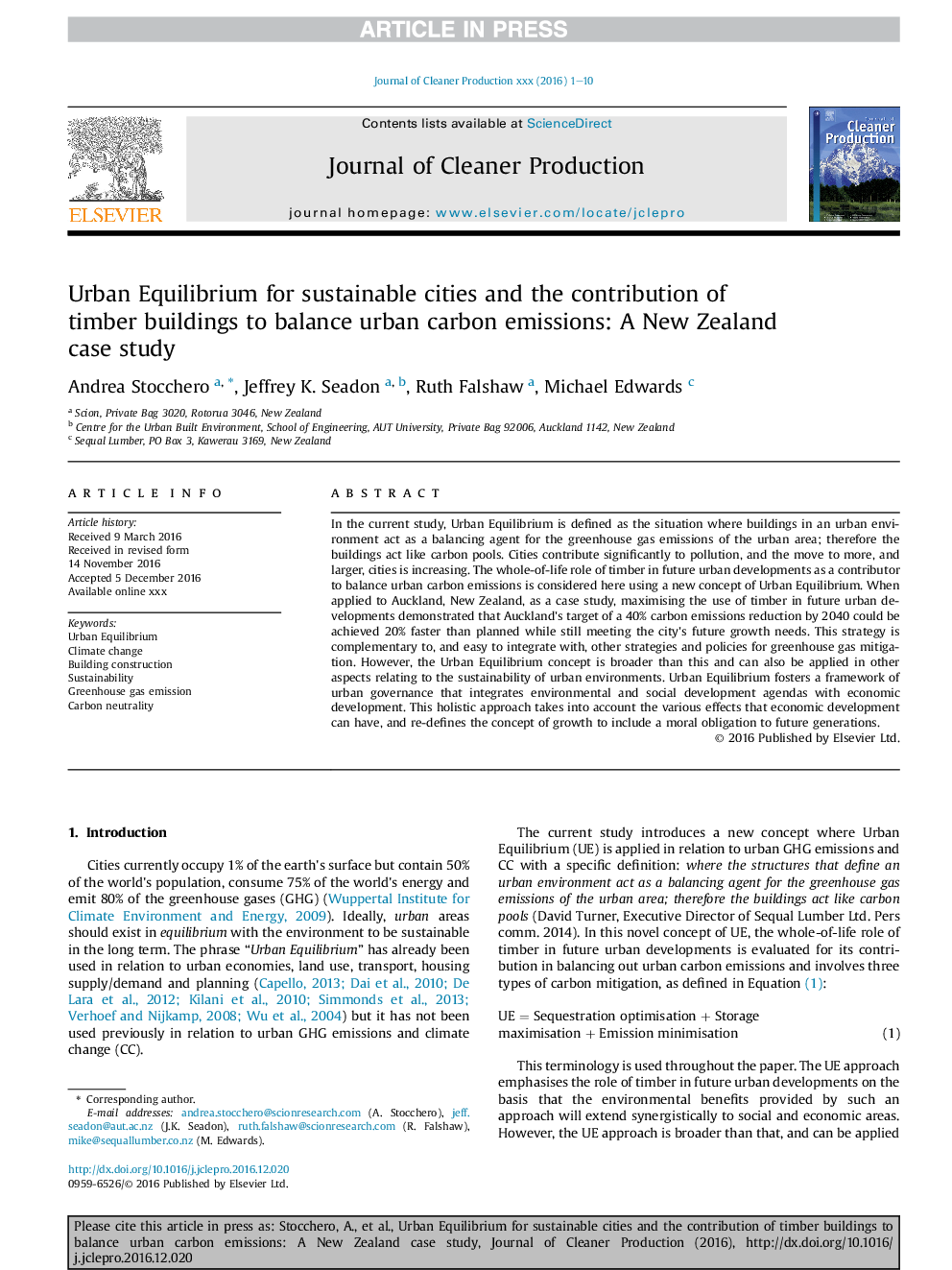| Article ID | Journal | Published Year | Pages | File Type |
|---|---|---|---|---|
| 5481144 | Journal of Cleaner Production | 2017 | 10 Pages |
Abstract
In the current study, Urban Equilibrium is defined as the situation where buildings in an urban environment act as a balancing agent for the greenhouse gas emissions of the urban area; therefore the buildings act like carbon pools. Cities contribute significantly to pollution, and the move to more, and larger, cities is increasing. The whole-of-life role of timber in future urban developments as a contributor to balance urban carbon emissions is considered here using a new concept of Urban Equilibrium. When applied to Auckland, New Zealand, as a case study, maximising the use of timber in future urban developments demonstrated that Auckland's target of a 40% carbon emissions reduction by 2040 could be achieved 20% faster than planned while still meeting the city's future growth needs. This strategy is complementary to, and easy to integrate with, other strategies and policies for greenhouse gas mitigation. However, the Urban Equilibrium concept is broader than this and can also be applied in other aspects relating to the sustainability of urban environments. Urban Equilibrium fosters a framework of urban governance that integrates environmental and social development agendas with economic development. This holistic approach takes into account the various effects that economic development can have, and re-defines the concept of growth to include a moral obligation to future generations.
Related Topics
Physical Sciences and Engineering
Energy
Renewable Energy, Sustainability and the Environment
Authors
Andrea Stocchero, Jeffrey K. Seadon, Ruth Falshaw, Michael Edwards,
